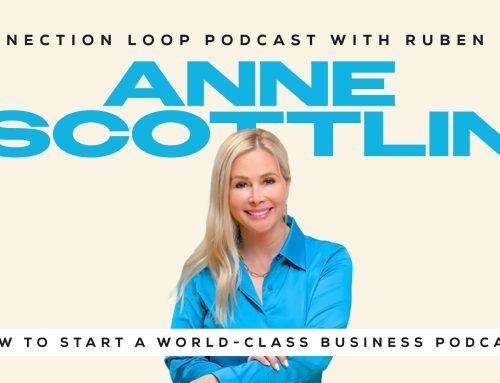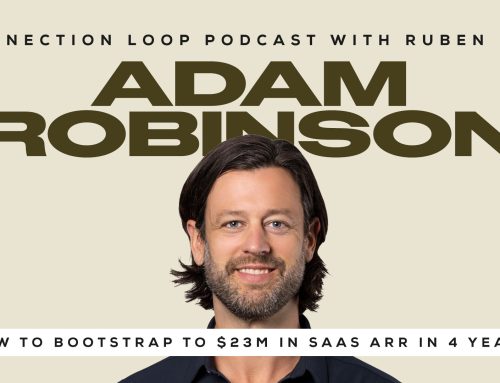Better deliverability & more replies — Building blocks of cold email success
During the recent webinar Woodpecker co-hosted with Dubb, we covered several different aspects of two fundamental elements of any cold email outreach campaign — deliverability and increasing response rates.
Without first succeeding with these two metrics, it’s fair to say that you’re wasting your time on everything else. Who cares if you have the best landing page ever if no one visits it? Does it really matter if you spent months (and a fortune) on materials for your website if the link you send to prospects lands in the “Promotions” tab?
Of course not. That’s why working on deliverability and response rates is key — everything else flows from getting a good start with contacts on your prospect list. Keeping the conversation going is easy, starting it is the hard part.
We’ve taken some of the highlights from the webinar and listed the most important takeaways here in this post. Use these tips in your next campaign and watch all your metrics move in the right direction!
Warm up your domain or email before you start your outreach campaign
If you’re about to go jogging, you take a minute to stretch and get loose first, right? The same idea applies to cold email campaigns in that you can’t just jump right into them without a little preparation first.
It’s important to remember that there is a “get to know you” period when your email address and the domain from which you send emails are evaluated by algorithms used by email service providers.
These algorithms are used to help identify anyone who abuses email by violating terms of service, usually regarding sending spam. For example, if someone opens up a new address and immediately starts sending huge volumes of mail, that’s a pretty good sign that spam is involved.
Once you set off this silent alarm, your sent messages are redirected away from inboxes and towards “Promotions” tabs or, worse, straight to the Spam folder. It can even happen that your messages are not delivered at all.
That’s why it’s important to start slow and “warm up” addresses and domains. It shows the email service providers that you’re naturally building an address list and not sending way more emails than a new address or domain should. This builds a kind of trust, resulting in a stronger virtual sender “reputation”.
The key here is to start slow and build up gradually. Don’t immediately start sending high volumes of mail with an address or domain that isn’t “warmed up.” Also, try to spread out the mail you do send evenly, without huge peaks in traffic.
Advanced cold email tools like Woodpecker make the whole warm-up process easy by automating most of it and working in the background to ensure that you don’t attract the wrong kind of attention while carrying out your campaigns.
Stop using blast emailing tools
Putting quality over quantity gets better results. This might seem counterintuitive to those who think that getting your message out to the maximum number of people as quickly as possible is the key to success but it’s true.
When you use a tool for sending very large volumes of emails, like MailChimp, the message is “stamped” with the signature of the servers they use, which are known to email service providers. Even if everything else about the message follows the good practices of email marketing, it’s still considered to be a commercial message and is treated as such.
This means you have to beg recipients to whitelist your address to avoid being automatically sent to the “Promotions” tab or the equivalent in different email service providers.
When sending through a tool designed for cold emailing, like Woodpecker, you send messages from your own email server (using your Simple Mail Transfer Protocol, or SMTP). This means you can use your own reputation as a sender in good standing to go straight to inboxes instead of a place where recipients are likely to never see your mail.
Use video to personalize your outreach
You might think that it’s hard to stand out in today’s busy world with so many people, brands, and others competing for your attention. However, there are simple tools out there that can provide an effective breakthrough in surprising places.
Like Dubb’s Chrome extension, for example.
This fantastic add-on not only makes it super-easy to spice up your emails with the most engaging content of all — video — but makes it equally easy to record personalized messages for each mail.
Just install the extension, click on the Dubb icon when you’re composing, and use your computer to record extra content for your mail. This is exactly the kind of unexpected “something” that gets attention and lets your prospects know that you are definitely talking directly to them, not to a huge mailing list.
Split-test your messages for better reply rates
A/B testing is hardly a new concept but it’s worth repeating that you can never run them too much. Refining all the elements of your message is a never-ending task and the more effort you put into it, the better results you will get.
There’s something to remember here, though. “Refining all the elements of your message” can only be done when those elements are compared to each other in isolation. In other words, when you run an A/B test, be sure that the only difference between version A and version B is a variation of the same element.
Test two versions of your subject line with no other differences, two versions of your introduction with no other difference, and so on. The same with graphic elements, calls to action, links, videos, and everything else.
The reason for this is simple. If there is more than one variable in play, you can’t know what made one version of your message perform better than the other. Keep it simple, keep it focused and perfect your message one variable at a time.
Start with a high-quality prospect list
Remember earlier when we mentioned quality over quantity? The same idea applies to the starting point for your campaigns — your prospect list.
The most important tip we can share when it comes to prospect lists is to never buy one. Even putting the potential legal issues aside, there are still lots of problems remaining for anyone who makes this mistake.
Even if the list was put together with some kind of strategy in mind (which is unlikely), it’s a near certainty that it has nothing to do with your needs. Are these the addresses of people who have expressed interest in buying a new car? Signing up for a cooking newsletter? Joining an online yoga class? Think about it – What are the chances that these random addresses that you paid for will be even remotely interested in your message? (Answer: zero).
Moving on from paying for ready-made prospect lists (reminder — don’t do it), there’s also the issue of legitimate but outdated lists. Old addresses, especially work addresses, aren’t always active and valid. Sending to invalid addresses results in a ‘bounce’, when the mail is undeliverable. The more bounces you get, the more you damage your address’ “reputation” as we mentioned earlier.
The more you damage your sending address, well…you probably know what happens next.
A low-quality prospect list will always cost you in terms of damage to your sending reputation, whatever the reason for the poor quality is. Even if everything else about your message is great, with perfect text, personalization, etc., it doesn’t matter if you’re failing to land in prospect inboxes (and ruining your own email address at the same time).
That’s why being personally engaged with the creation of your prospect list is a must. You can do this by building it with a well-specified persona in mind or, at a minimum, using widely available lead generation tools like LeadFuze to get quality data.
Offer value in your CTA, make it a no-brainer to reply
It’s too easy to fall into the trap of using the usual familiar but boring calls to action in your emails. “Set up a meeting with me”, “Let me show you how I can help”, “Just give me 30 minutes!”, and so on.
Time for a truth bomb. These don’t work because they’re asking for too much, too soon.
These might be appropriate for much later in the conversation, but when things are just starting out this is just going too far. You’re asking for someone’s time and they don’t even know you yet? Good luck with that.
Instead of acting like you’re trying to close a deal in your first message, establish yourself as someone who wants to help by sharing knowledge or resources. Ask questions to learn more about the prospect’s situation. Invite them to an event that could help them, like a webinar.
In short, offer something for nothing. Don’t scare anyone away by rushing past an opportunity to get a conversation started.
If your deliverability and engagement are done right, everything else will work out
Like we said at the start, landing in prospect inboxes and getting a two-way conversation started are the foundation of everything that follows. If you focus on improving these two things, you will be on the right path toward better conversions and successful cold emailing campaigns.




Leave A Comment